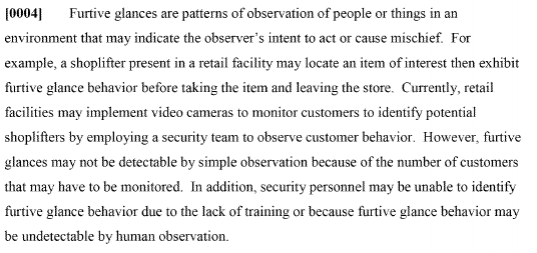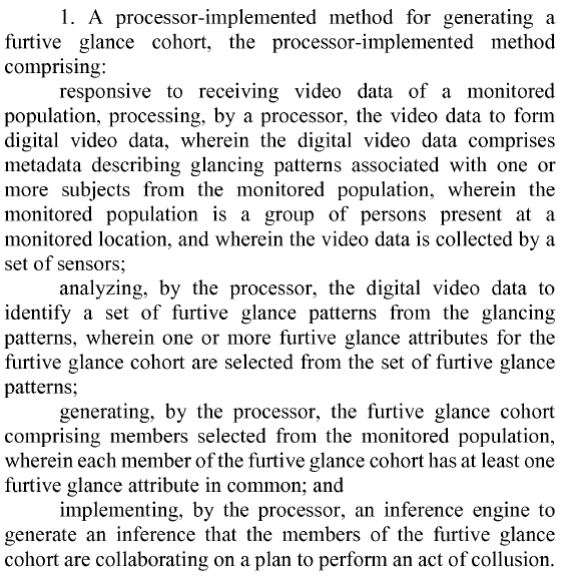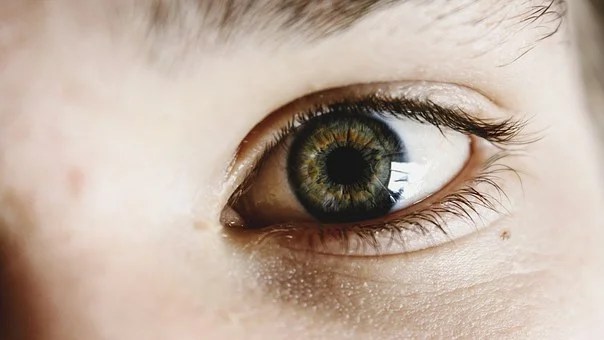IBM has aggressively appealed Section 101 rejections to the PTAB, with mixed success. Today we review US 12/335,521, which is an application that sounds awfully close to Big Brother surveillance one might find in a science fiction police state. The invention relates generally to “an improved data processing system and in particular to a method and apparatus for generating cohorts from video data.” But the system is not just looking for any cohort – instead the allegedly inventive aspect of the application is to utilize the ever evasive “furtive glance.” According to the application, these cohorts are identified by having common attributes in their furtive glances. Paragraph [0004] of the application explains how this can be helpful in monitoring for shoplifting:

This technology does sound truly amazing. Expecting to see some very complicated and detailed description in the specification as to how to put this high-tech invention to practice, what is actually disclosed in the specification and figures is somewhat disappointing. The specification includes some very simple flowcharts walking through the claim elements and a lot of description that seems to be more wishful thinking than anything. For example, the specification describes a “pattern processing engine” to detect the glancing patterns. While description of “data models” and other generic language is provided, few actual details of how to achieve the described operation are provided. Almost nothing technical in nature is easily found. The closest seems to be an example where there is a threshold number of objects viewed by an observer in a predefined period of time, and where a threshold rate of eye movement between objects is used.
This case actually went to the PTAB twice. The first appeal resulted in a reversal of prior art rejections in 2015 but then the examiner re-opened prosecution and entered Section 101 rejections. The second, and most recent, PTAB decision resulted in the 101 rejections being affirmed. That result seemed relatively predictable given the current abstract idea environment and the relatively generic disclosure with little to no real technical details or description of real technical problems to be solved. Claim 1 is reproduced below:

So, if you have a cool high-tech sounding invention, make sure that the specification actually describes some technical problems and gives some technical details as to how those problems are solved in order to reduce the chances of an easy Section 101 affirmance by the PTAB.

Leave a comment